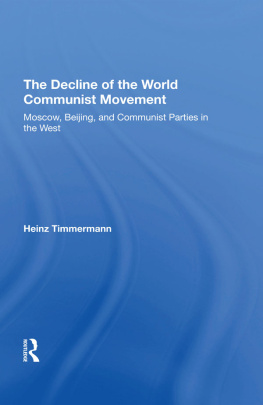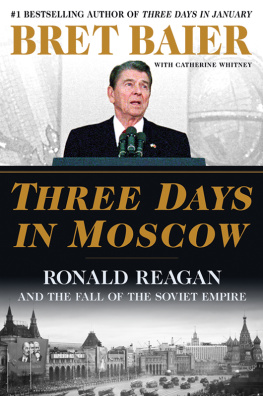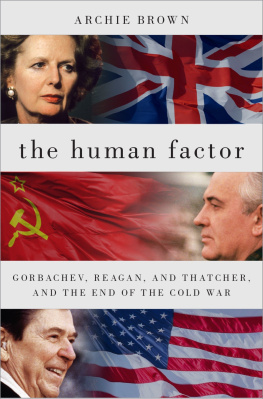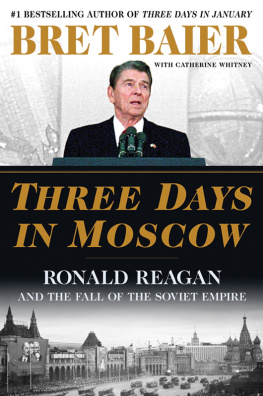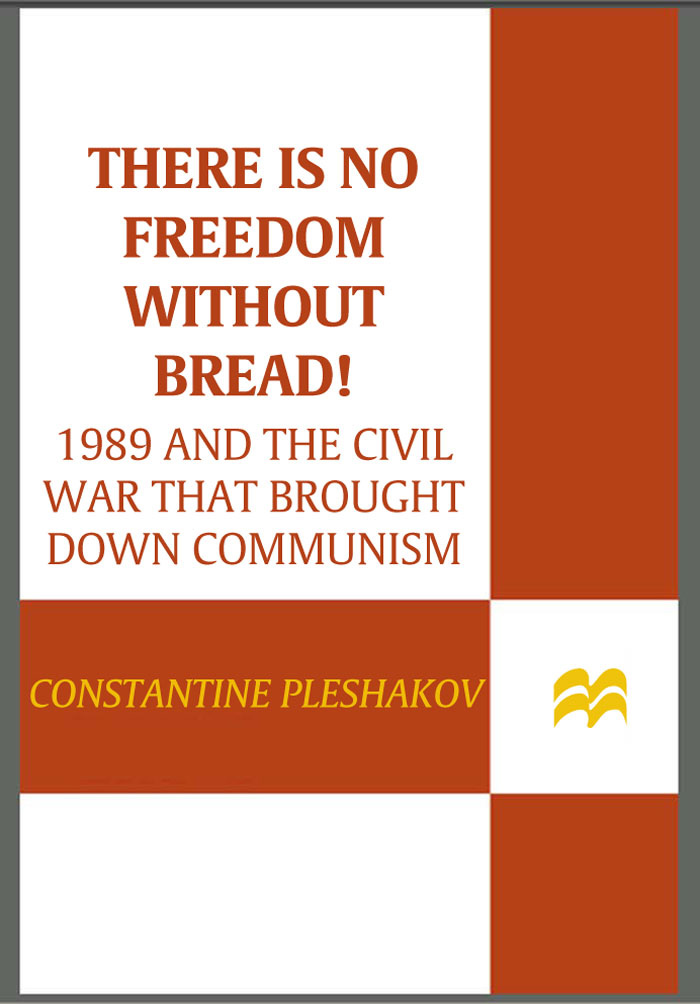Also by Constantine Pleshakov
Stalins Folly: The Tragic First Ten Days of World War II on the Eastern Front
The Tsars Last Armada: The Epic Voyage to the Battle of Tsushima
The Flight of the Romanovs: A Family Saga (with John Curtis Perry)
Inside the Kremlins Cold War: From Stalin to Khrushchev (with Vladislav Zubok)
There Is No Freedom Without Bread!
There Is No Freedom Without Bread!
1989 and the Civil War That Brought Down Communism
Constantine Pleshakov
Farrar, Straus and Giroux / New York
Farrar, Straus and Giroux
18 West 18th Street, New York 10011
Copyright 2009 by Constantine Pleshakov
All rights reserved
Distributed in Canada by D&M Publishers, Inc.
Printed in the United States of America
First edition, 2009
Grateful acknowledgment is made for permission to print excerpts from the following previously published materials:
Excerpts totaling about 850 words from pp. 80, 87, 90, 9498, 129, 13031, and 14550 from Journey to a Revolution by Michael Korda. Copyright 2006 by Success Research Corporation. Reprinted by permission of HarperCollins Publishers.
From A Life with Karol: My Forty-Year Friendship with the Man Who Became Pope by Cardinal Stanislaw Dziwisz, translated by Adrian J. Walker, translation copyright 2008 by Doubleday, a division of Random House, Inc. Used by permission of Doubleday, a division of Random House, Inc.
From A World Transformed by George Bush and Brent Scowcroft, copyright 1998 by George Bush and Brent Scowcroft. Used by permission of Alfred A. Knopf, a division of Random House, Inc.
Excerpts in English from A Way of Hope: An Autobiography by Lech Walesa Librairie Arthme
Fayard 1987. Various quotes from A Way of Hope, English language translation copyright 1987 by Henry Holt and Company. Reprinted by arrangement with Henry Holt and Company, LLC.
Library of Congress Cataloging-in-Publication Data
Pleshakov, Konstantin.
There is no freedom without bread! : 1989 and the civil war that brought down communism / Constantine Pleshakov.1st ed.
p. cm.
Includes bibliographical references and index.
ISBN: 978-0-374-28902-7 (hardcover : alk. paper)
1. Europe, EasternPolitics and government19451989. 2. Soviet UnionPolitics and government19451991. 3. PolandPolitics and government19451980. 4. PolandPolitics and government19801989. 5. Berlin Wall, Berlin, Germany, 19611989. 6. CommunismEurope, EasternHistory. 7. CommunismSoviet UnionHistory. 8. Anti-communist movementsEurope, EasternHistory. 9. Anti-communist movementsSoviet UnionHistory. 10. Anti-communist movementsPolandHistory. I. Title.
DJK50.P59 2009
947.0009048dc22
2009010185
Designed by Abby Kagan
www.fsgbooks.com
10 9 8 7 6 5 4 3 2 1
To the memory of Sasha Sumerkin (19432006), who often said: If there
is one single good thing about emigration, it is that sooner or later you
suddenly realize that all the awful things we blamed
on communism or the unfortunate peculiarities of our fatherland are,
in fact, just human nature
Contents
There Is No Freedom Without Bread!
Introduction
I n June 2007, Reuters reported from Warsaw: A 65-year-old rail-wayman who fell into a coma following an accident in communist Poland regained consciousness 19 years later to find democ racy and a market economy, Polish media reported on Saturday... When I went into a coma there was only tea and vinegar in the shops, meat was rationed and huge petrol queues were everywhere... Now I see people on the streets with cell phones and there are so many goods in the shops it makes my head spin. The incapacitating accident happened in 1988, a year before communism fell in Eastern Europe and three years before it would collapse in the Soviet Union.
Weve all read and heard much about the fall of communism, and some of us have actually lived it. The conventional wisdom tells us that 1989 was about a unified Eastern bloc that rose up, in the name of freedom and the free market, to throw off the yoke of Moscow, an occupying power that had exported communism at the point of a gun. That is not exactly what happened.
The origins of communism in Eastern Europe are much more complex than the at-the-point-of-a-gun interpretation, and if we want to understand the upheavals of the 1980s, we must go far back. Just one example to illustrate the point: twenty-five years before Stalins troops occupied Eastern Europein the process of liberating it from the Nazis, it must be noteda Communist revolution wracked Hungary. The 1919 revolutionaries, completely indigenous, proclaimed the Hungarian Soviet Republic and attempted an egalitarian transformation of their countrythe endeavor cut short only when a foreign power, Romania, wary of the possible further spread of the Communist bug, sent its troops into Hungary. By the time Romania struck, the Hungarian experiment had already inspired a Communist state three hundred miles to the westthe Bavarian Soviet Republic in the south of Germany. The freak regime lasted for just five weeks, but it proved popular enough to cause at least one thousand rebels to die in the streets of Munich fighting the central governments troops sent to crush it. The crackdown didnt extinguish the egalitarian impulse in Germany, and the Communist Party grew into the major opponent of an extremist movement coming from the opposite end of the political spectrumthe Nazis. This is how the historian Frederick Taylor describes the confrontation: Berlin streets were in constant uproar. Knives, knuckle-dusters, fire-arms, and even explosives were used in battles that really did resemble engagements between armies in a vicious little civil war. After Hitler came to power, the German Communists became the first victims of the Nazi terror.
World War II, which started six years later, helped the Communist cause. The swift German victories discredited the prewar European governments, and the devastating effects of the German occupation undermined every social structure on the continent. In this vacuum, communism appeared to be a promising alternative again, particularly since the Communists fought bravely in the resistance movement. In the first postwar elections in both France and Italy, the Communists got over 25 percent of the popular vote. In Greece, the Communists and the Royalists clashed in a civil war that claimed at least fifty thousand lives.
In 194448, the whole Old World experienced a pandemic of the red bug, yet only Eastern Europe became Communist. The common wisdom says that Europe was divided along a very simple fault line: the westernmost advance position of the Red Army in the final days of World War II. That is not true. The Red Army also occupied Finland and eastern Austria, but later withdrew without imposing communism on either nation.
If Joseph Stalin had ever been a revolutionary, after 1945 he was just a calculating empire-builder. He wanted a buffer zone between the USSR and a potential adversarythe American troops stationed in Western Europe. He thought World War III would arrive soon, possibly in his lifetime, and needed his army properly entrenched before it came. The surest way to secure the territories required for that was to encourage ideologically fraternal regimes that would be dependent upon Soviet aid for survival. To make regimes like that viable, the countries in question had to have indigenous Communist movements and be in a state of civil conflict. Austria and Finland didnt qualify, but the countries of Eastern Europe did.



